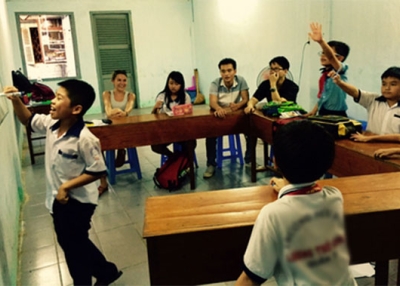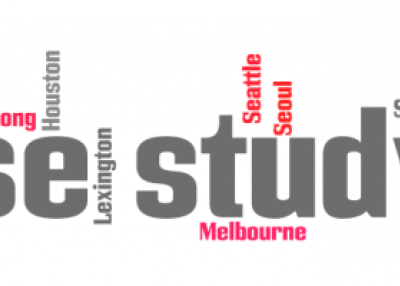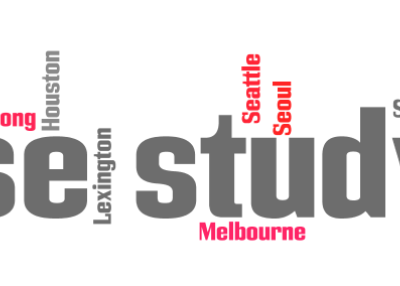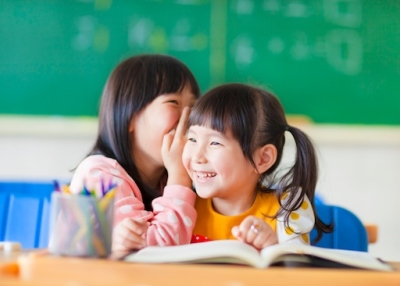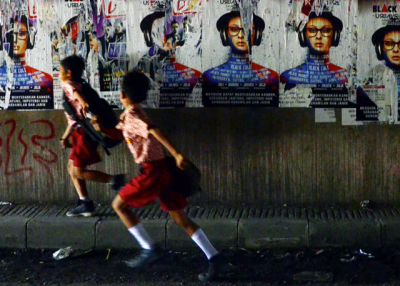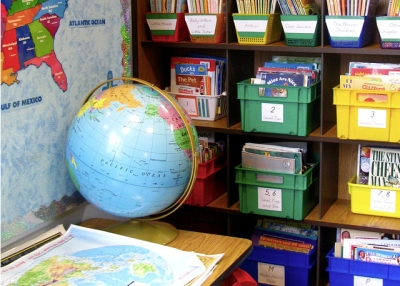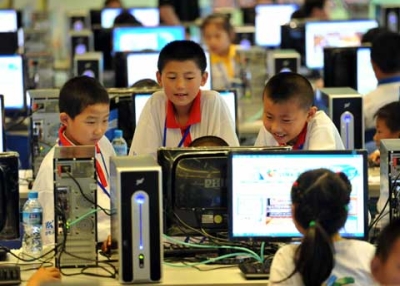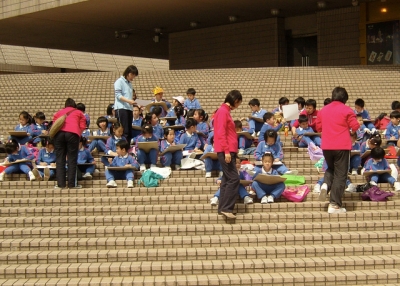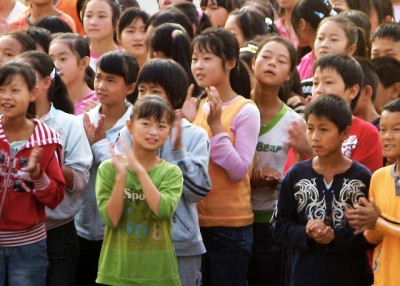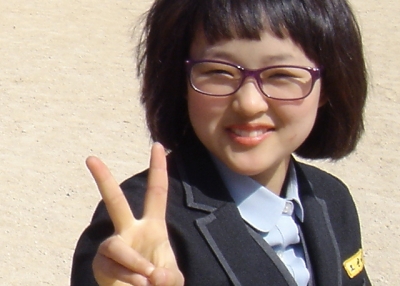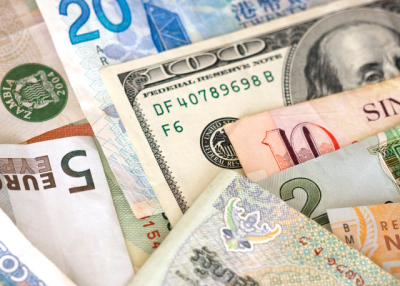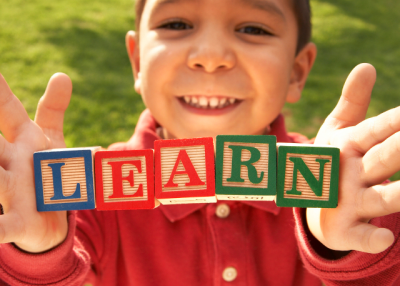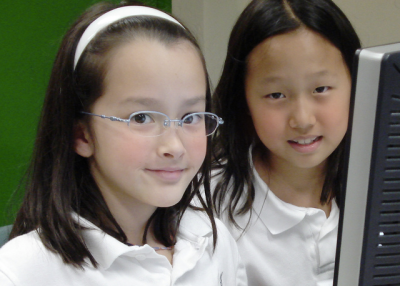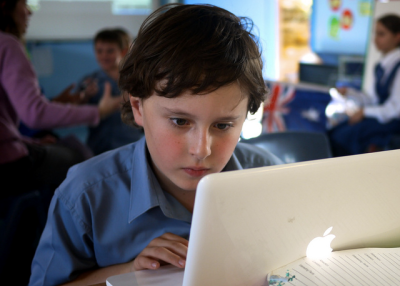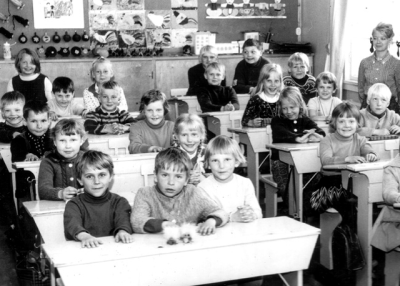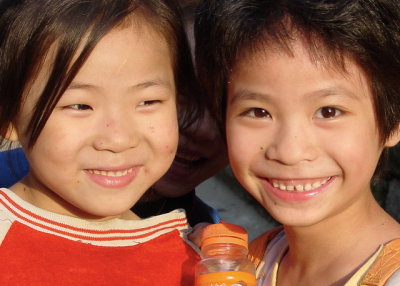South Korean Education
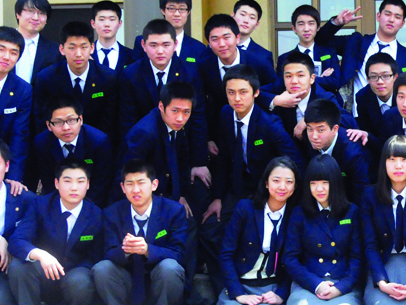
Our bus wound its way uphill along a narrow, crowded street toward Shinn II Boys High School, and one could only imagine the excitement and disruption we were about to bring to its staff and students. Hanging over the school's entrance was a banner welcoming our group of 19 Americans and more than 40 other educators from Australia, Canada, and New Zealand. We could see dozens of faces peering at us through the windows of the four-story building.
Our visit to this school was one of several we would make during the Summer 1996 Korean Studies Program sponsored by the Korea Society, an organization dedicated to academic and cultural exchanges to promote greater understanding of Korea and its people. Our visits and talks with teachers, students, and school officials allowed for some preliminary impressions and observations about education in Korea.
Since that visit, much has changed throughout Korea. Economic and political upheavals have shifted both personal and institutional outlooks. As with other societal constructs, Korean schools have been part of this process.
The Education System
The Korean public education structure is divided into three parts: six years of primary school, followed by three years of middle school and then three years of high school. In 1996 only about five percent of Korea's high schools were coeducational. The proportion of coeducational schools has increased by almost ten percent. However, classes in many coeducational high schools are still divided along gender lines. The curriculum is standardized so now both boys and girls study technology and domestic science.
The primary curriculum consists of nine principal subjects: moral education, Korean language, social studies, mathematics, science, physical education, music, fine arts, and practical arts. English-language instruction now begins in the third grade, so that children can start learning English in a relaxed atmosphere through conversational exchange, rather than through rote learning of grammatical rules as is still the practice in many middle and high schools. The major objectives, as stated in a 1996 background report by the Ministry of Education, are "to improve basic abilities, skills and attitudes; to develop language ability and civic morality needed to live in society; to increase the spirit of cooperation; to foster basic arithmetic skills and scientific observation skills; and to promote the understanding of healthy life and the harmonious development of body and mind.” The seventh annual curriculum, which began implementation in March 2000, kept these basic goals but updated many elements to reflect changes in Korean society.
Upon completion of primary school, students advance to middle school, which comprises grades seven through nine. The curriculum consists of 12 basic or required subjects, electives, and extracurricular activities. While elementary school instructors teach all subjects, middle school teachers, like their colleagues in the United States, are content specialists.
High schools are divided into academic and vocational schools. In 1995, some 62 percent of students were enrolled in academic high schools and 38 percent in vocational high schools. A small number attended specialized high schools concentrating in science, the arts, foreign languages, and other specialized fields. This is still the case.
The aims of education at the high school level are stated as "to foster each student's personality and ability needed to preserve and strengthen the backbone of the nation; to develop students' knowledge and skills to prepare them for jobs needed in society; to promote each student's autonomy, emotional development, and critical thinking abilities to be brought to bear in and out of school; and to improve physical strength and foster a sound mind."
The School Calendar and School Days
The school calendar has two semesters, the first extending from March through July and the second from September through February. There are summer and winter breaks, but 10 optional half days at the beginning and end of each break¾which are attended by practically all students¾reduce each of these biennial vacations to the remaining 10 days.
A typical day finds high schoolers studying before school begins at about 8:00 A.M. Classes run for 50 minutes each, with a morning break and a 50-minute lunch period. The afternoon session resumes at about 1:00 P.M., and classes continue until about 4:00 or 4:30, followed by the cleaning of the classroom. Students may then take a short dinner break at home, or they may eat at school. Teachers typically move from room to room, while students stay in one place.
Students return to the school library to study or attend private schools or tutoring sessions until between 10:00 P.M. and midnight. They return home where they may have a snack, listen to music, or watch television before going to bed. Elementary and middle school students have similar but somewhat less rigorous days with shorter hours and more recreational activities.
Attendance requirements call for a minimum of 220 days at all three levels. The curriculum is prescribed by law, as are the criteria for the development of textbooks and instructional materials. There have been periodic curriculum revisions, most recently in March 2000, and the trend is definitely toward decentralization in determining, diversifying, and implementing the curriculum.
The well-educated person—according to the curriculum and perhaps shedding further light on what is valued in Korean society—is healthy, independent, creative, and moral.
Visiting a High School
The high schools that we saw were large and rather barren in appearance. Invariably, a large grassless area in front of the school serves as the playing field as well as accommodates schoolwide assemblies and other meetings. Inside, classrooms line the straight, sparsely furnished halls and are typically filled with 50 or 60 uniformed students and an instructor.
Most instruction we observed consisted of teacher lectures, with only rare interruptions for questions. If students had questions, they might speak to the teacher after class. There is considerable interest in computers. At the end of 1999 there was about 1 computer per every 23.8 primary and secondary school student and 1 per every 1.4 primary and secondary school teachers. The Ministry of Education planned to raise the ratio to 1 computer per 17.4 students and 1 per every teacher by the end of 2000. The computer laboratory we visited was equipped with about 50 terminals meant to serve 3,000 students, but at the time only teachers were in the room.
As we noted, discipline problems were infrequent, and great respect for teachers was evident. Students bowed, as is the custom, when passing teachers in the halls and appeared hesitant to enter faculty offices. We learned that discipline cases are generally referred to the student's homeroom teacher, who then talks with the student and his or her family. In addition to administering discipline, which may but infrequently includes corporal punishment, homeroom teachers offer counseling, help students with college applications, and maintain contact with parents.
We were told in 1996 that in years past when teachers informed parents of discipline problems, parents responded by sending the teacher either a small amount of rice as an apology for having caused the teacher worry and trouble or a switch for the teacher to discipline the child. Since 1999, teachers no longer have the legal authority to administer corporal punishment. This change has created some confusion as to the extent of teachers' authority.
Despite these differences, Korean teachers still have more responsibility for counseling students and controlling their behavior than do teachers in the United States. Korean culture grants teachers the same authority as parents and attributes them even greater responsibility for children's moral and academic development.
One Teacher's Day
One teacher we met was a Korean American from Maryland who teaches conversational English. As he explained, students are rarely assigned written work either in class or as homework. His regular workload consists of five classes that meet four times each week, with an additional twenty classes that meet once a week. With a typical class size of 50 or more students, this teacher would have 1,000 papers to review weekly. He, of course, could not evaluate them and handle all his other responsibilities.
This teacher's workday extends from 7:30 A.M. to about 5:00 P.M., with an additional half day on Saturday. Although a relatively long day by American standards, it leaves him with considerable free time and few responsibilities other than teaching. While he reported that teachers’ salaries are relatively high by Korean standards of living, we learned that teachers throughout the country have expressed dissatisfaction with their pay.
This teacher confessed that he did not know if his students actually were learning English. There are no failing grades, but there are remedial classes, and students may attend supplemental education centers if they or their parents feel there is a need. Most schools give trial achievement tests twice a year to prepare students for college entrance examinations. In addition, multiple Internet websites offer the same services, helping students to gauge their own progress.
Regarding instructional methods, this teacher has tried small groups and other nontraditional approaches to teaching but felt his students did not respond well, being unfamiliar with such methods and uncertain about how they were expected to perform. He therefore returned to lecturing, which he attempts to enliven with frequent questions. His many students seem amazingly cooperative, good-natured, and enthusiastic. A lively question-and-answer session directed by the teacher about students' images of the United States took place during our visit. As one might expect, they were most aware of international sports and celebrity figures, such as Michael Jordan and Michael Jackson. However, when asked what came to mind when they thought of the United States, many answered "freedom" or "the Statue of Liberty." But they also asked about drugs, and if it was true that police patrol American high schools.
Visiting an Elementary School
We also visited an elementary school of 700 students. Located in Ch'unchon, a city of 200,000, northeast of Seoul, the school had the familiar large, bare playground and meeting space, along with typical class sizes of approximately 50 students.
In contrast to the high schools we visited, this school’s halls were decorated with bulletin board displays, banners, photographs, trophy cases, historical exhibits, and examples of student work. Similarly, the classrooms in this worn but well-kept building were covered with displays of children’s work. The school is famous for its speed skaters, and many alumni who have gained prominence in sports have given their trophies to the school to encourage today’s students.
The music teacher has more than 50 violins to be used by students in a challenging classical music program. One room stocked with stringed and percussion instruments is devoted to traditional Korean music. Students begin studying science in the second grade, and the school’s science laboratory has several student workstations. A large computer lab is available for classes, and new computers with Pentium processors had just arrived to replace the machines currently in use.
The school library, according to the principal, needs more books, given the size of the student body. He suggested, however, that this school was fairly representative of Korean elementary schools, except for its well-equipped television studio, which students use to produce school programs.
School tradition and achievement is very important to Korea's principals. One high school has a large stone marker engraved with its motto, "Diligence and Wisdom," and statues adorn the school grounds. One depicts a standing young student looking intently into the eyes of a seated female teacher. The other is of Admiral Sun-shin Yi, the heroic sixteenth-century warrior who designed and built a fleet of iron-plated "turtle boats" that were instrumental in the defeat of a Japanese invasion. In the principal's office, one wall has photographs and statements noting the qualifications of the staff. The entrance to the school is lined with pictures of past principals and a large inscription, "Teachers create the future."
Elementary schools put more emphasis on art, music, and physical education than secondary schools do. In addition, at this level more time—roughly the same amount that a Korean high school student spends preparing for college entrance tests—is devoted to extracurricular activities.
Social Studies and the Curriculum
Social studies education begins in the first and second grades with a course combined with science and titled "Intelligent Life." During their 34 weeks of schooling, first-grade students receive 120 hours, and second-grade students 136 hours, of this instruction. Third- and fourth-grade students receive 102 hours of social studies instruction and fifth- and sixth-graders are given 136 hours per year. At the middle school level, seventh-grade students have 102 hours, and eighth- and ninth-graders receive 136 hours of social studies instruction.
In high school, first-year students take a program of required courses. By their second year, students can select from among three tracks: humanities and social studies, a natural science track, and a vocational track. However, this is likely to change. The social studies track includes courses in Korean history, politics, economics, society, and culture as well as world history, world geography, and social studies.
Korea has a national curriculum developed and monitored by the Ministry of Education. It is revised every five to ten years; implementation of the seventh national curriculum began in 2000. This curriculum seeks to develop democratic citizens who have strong moral and civic convictions.
Humanity Education
There have been proposals to change the nature of the educational process—from focusing on preparation for college and entrance into schools that will ensure economic success and intellectual development, over the cultivation of attitudes and abilities needed to become responsible citizens. Toward this end a practice-based approach to humanity education has been implemented, with the goals of instilling values of etiquette, public order, and democratic citizenship through experiential activities.
Elements of this curriculum are introduced throughout the school program. From kindergarten through third grade, the focus is on etiquette, the observing of social rules, and the development of a sense of community. Fourth through ninth grade emphasizes democratic citizenship, including rules, processes, and reasonable decision-making. At the high school level, attention is given to global citizenship, including understanding other cultures and peace education.
A 1995 government report on Korean education, titled “Korea’s Vision for the Twenty-First Century,” stated that the curriculum must encourage students “to be global citizens, which includes openness to diversity, broad perspectives, an understanding of the various traditions and cultures of other countries, and sensitivity to environmental issues and conflicts among regions and races. Accordingly, there should be greater emphasis on tolerant and open-minded attitudes toward diversity and differences.” The seventh curriculum builds on this document and fosters the development of character education as well as community service.
Looking Toward the Future
Along with their strong belief in the family and cultural traditions, Koreans value education and are willing to make significant personal sacrifices to ensure that their children are afforded the best available learning opportunities. No nation has a higher degree of enthusiasm for education than Korea, and nowhere are children more pressured to study. Evidence of major educational accomplishments, such as degrees from prestigious colleges and universities, strongly influence a person’s suitability for employment, marriage, and everyday interpersonal relations.
In 1996 Moo-Sub Kang, director general of the Korean Educational Development Institute, noted that education administration was gradually moving from the national Ministry of Education to individual schools. In 1998 a Presidential Commission for a New Education Community was established to encourage further reform. More recent educational policy encourages a modest degree of curriculum decentralization. Local boards of education, similar to those in the United States but covering larger geographic areas, now have the requisite degree of autonomy to interpret the national curriculum in terms of local needs. For example, some schools now offer more computer, art, music, and writing courses, eliminating the need for their extracurricular study. Principals now can work with social studies teachers in developing aspects of the curriculum that reflect local needs, such as character education and community service programs.
However, the issue that continues to receive the most attention is the need to reform the school system. Many Koreans believe that the mass education of the industrial era is not appropriate to an era of high technology and globalization. In practical terms, large lecture classes of 50 or 60 students with an emphasis on rote learning will not produce creative or morally sensitive graduates.
In response to a changing society, the Korean government established a new vision for education. Unveiled by the Presidential Commission on Educational Reform in May 1995, this vision projected open, lifelong education that would provide individuals with equal and easy access to education at any time and place. Further, the Commission felt that education suitable for the twenty-first century would be achieved through technology. The long-range goal was to raise the quality of education to a world-standard level of excellence.
Critics point out that in the ensuing five years most classroom practices have remained unchanged. In addition, policy is still set through a four-tiered hierarchical model that is heavily weighted against parental and teacher input, despite locally elected boards of education.
Some Tentative Conclusions
Education has contributed to the growth of Korea's democratic government. It has produced hardworking, skilled employees who have brought about an economic miracle within a single generation. It has reaffirmed traditional values while maintaining its commitment to modernization, citizenship, and global involvement. The ambitious and comprehensive reform plans developed in 1995 by the Ministry of Education still appear to enjoy widespread public and professional support. A broad spectrum of the society recognizes the need for lifelong learning as a precept for social and economic improvement.
Authors' Note: Based on various reports and discussions with Korean educators, we’ve attempted to update our previous work and place it within these new concepts. We would like to thank Dr. Tae-Hoon Kim, professor of ethics education at Kong-Ju National University of Education; Mr. Hyung-Sik Kim, superintendent of schools, Kwangju, Republic of Korea; Mr. Hang-In Kim, social studies doctoral candidate at the University of Georgia; and Mr. Young-Seog Kim, social studies doctoral candidate at the University of Georgia, for their assistance in the preparation of this paper.
Authors: Richard Diem, Tedd Levy, and Ronald VanSickle.

